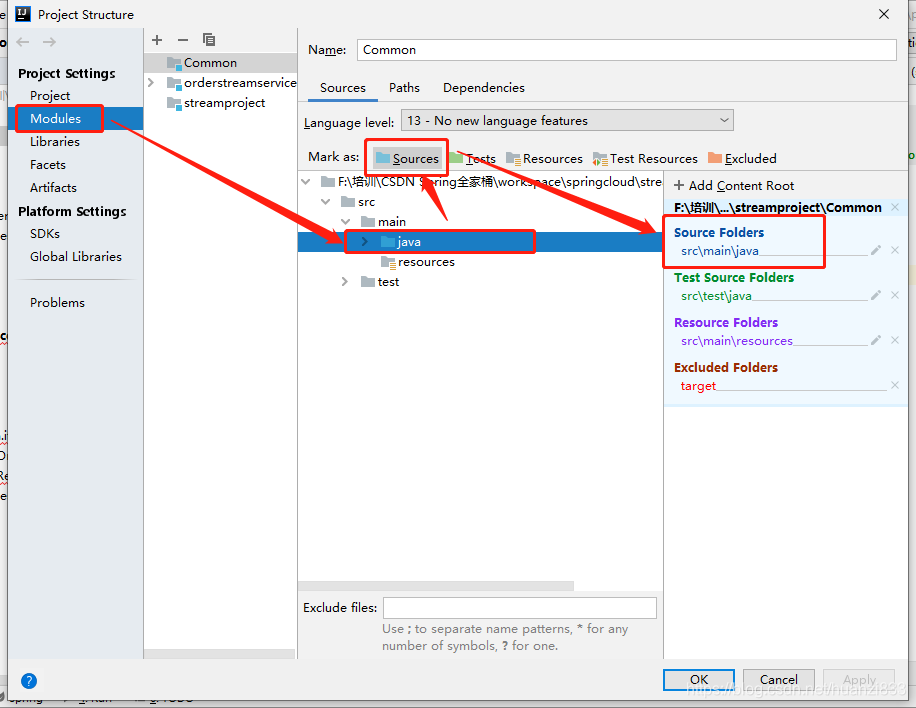目录
思维导图大纲:
思维方面:
1. 类的定义:
2. 类的特点:
3. this指针:
4. 类的默认成员函数
默认构造函数
1.构造函数
2.析构函数
3.拷贝构造函数
4. 赋值运算符重载
1. 运算符重载
5. 日期类实现:
Date.h
Date.cpp
Text.cpp
思维导图大纲:

思维方面:
思维方面:由面向过程转化为面向对象
我们造一辆车,我们需要金属框架,轮胎,玻璃窗,发动机等等
面向过程:我们去自己造金属框架,轮胎,玻璃窗,发动机等等,然后组装
面向对象:我们自己不造以上配件,我们直接组装
1. 类的定义:
1. C语言中的struct结构体
我们只能在其中放变量
更改更方便的名字需要借助typedef
typedef struct Stack
{int* array;int capacity;int size;
}Stack;2. C++中的class类
我们可以在其中存放变量,我们将这些变量叫做成员变量
成员变量前最好加_下划线来区分
我们还可以存放函数,我们将这些函数叫做成员函数
我们不用使用typedef直接使用类名
class Stack
{// 成员函数// 初始化void Init();// 销毁void Destroy();// 成员变量int* _array;int _capacity;int _size;
};2. 类的特点:
(1) 类域
我们之前了解了命名空间域,全局域,局部域
在类里面也被类域保护,声明和定义分离时需要表明
class Stack
{// 成员函数// 声明在内// 初始化void Init(int n = 4);// 销毁void Destroy();// 成员变量int* _array;int _capacity;int _size;
};// 定义在外
// 需要使用Stack::声明类域
void Stack::Init(int n)
{_array = (int*)malloc(sizeof(int) * n);if (_array == nullptr){perror("malloc fail!");return;}_capacity = n;_size = 0;
} (2)访问限定符
我们知道类的成员函数和成员变量属于类域内,当我们主函数去调用时访问权限不够
类的默认权限为私有——private
类的三大权限:public-公有,private—私有,protect-保护
想要访问类需要将权限改为公有,但默认我们不去修改类的成员变量,所以我们只将成员函数设为公有
class Stack
{
public:// 成员函数// 初始化void Init(int n = 4){_array = (int*)malloc(sizeof(int) * n);if (_array == nullptr){perror("malloc fail!");return;}_capacity = n;_size = 0;}// 销毁void Destroy(){free(_array);_array = nullptr;_capacity = 0;_size = 0;}private:// 成员变量int* _array;int _capacity;int _size;
};类的实列化:
前面的类只是声明,我们需要定义-即开空间
说人话就是:前面的类就好比一张图纸,我们实例化就是根据这张图纸建筑房子
类和对象的关系是:一对多,一张图纸可以盖很多很多相同的房子
int main()
{// 类的实列化Stack st;st.Init();st.Destroy();return 0;
}对象的大小计算和c语言的结构体的内存对齐规则一模一样
首先我们的类中的成员函数会被多次调用,不同的对象都会去调用,所以我们为了节省空间
不将成员函数放在类中存储,我们将成员函数放在公共区域
类中存储的只有成员变量
类内部没有成员变量的,只有成员函数或者什么都没有默认给一个字节用于对象占位标识,表示存在
class A
{
public:void Print(){cout << "void Print()" << endl;}private:char _a;int _b;double _c;
};class B
{
public:void Print(){cout << "void Print()" << endl;}
};class C
{};class D
{
public:void Print(){cout << "void Print()" << endl;}
private:A _d;int _e;
};int main()
{// 实例化A a;B b;C c;D d;// 输出大小cout << sizeof(a) << endl;cout << sizeof(b) << endl;cout << sizeof(c) << endl;cout << sizeof(d) << endl;return 0;
}



3. this指针:
不存放在类,存放在栈,有些编译器也存放在寄存器中
class Date
{
public:/*void Init(Date* this, int year = 1949, int month = 1, int day = 1){this->_year = year;this->_month = month;this->_day = day;}*/void Init(int year = 1949, int month = 1, int day = 1){_year = year;_month = month;_day = day;}/*void Print(){cout << this->_year << "/" << this->_month << "/" << this->_day << endl;}*/void Print(){cout << _year << "/" << _month << "/" << _day << endl;}
private:int _year;int _month;int _day;
};int main()
{// 我们定义两个对象进行初始化Date d1;Date d2;d1.Init(2024, 7, 11);d2.Init(2024, 8, 1);d1.Print();d2.Print();// 为什么调用同一个函数,但是却给不同对象初始化不同值,这边也没传地址啊?// 其实默认传了地址,并且使用this指针对不同的对象进行了初始化// 但是this指针不可以显示成为参数,可以在函数内部显示使用和返回return 0;
}考察理解this指针的题目
class A
{
public:void Print(){cout << "void Print()" << endl;}
private:int _a;
};class B
{
public:void Print(){cout << "void Print()" << endl;cout << this->_a << endl;}
private:int _a;
};int main()
{A* a = nullptr;a->Print();B* b = nullptr;b->Print();// 以上两个程序语句分别是1.报错,2.运行崩溃,3.成功运行?return 0;
}类A只是传过去nullptr但是this没有进行解引用和访问操作所以程序成功运行。
类B传过去nullptr并且进行了访问操作所以程序崩溃。
4. 类的默认成员函数
什么是默认成员函数,简单说我们不去实现,编译器也会默认生成这些成员函数
默认构造函数
下面以栈类介绍类的默认函数
1.构造函数
函数名与类名一样,无返回值
全缺省构造函数
我们不自己实现构造函数,编译器会默认生成一个无参构造函数,这个函数对内置类型不做处理,对自定义类型会去调用他们的构造函数
无参构造函数,全缺省构造函数,编译器默认生成的无参构造函数都可以称作为默认构造,不传参即可调用的构造为默认构造
无参构造函数,全缺省构造函数,编译器默认生成的无参构造函数三者只能存在一个
相当于Stack中的Init
class Stack
{
public:// 无参构造函数/*Stack(){cout << "Stack():无参构造" << endl;_array = (int*)malloc(sizeof(int) * 4);if (nullptr == _array){perror("malloc fail!");exit(-1);}_capacity = 4;_size = 0;}*/// 全缺省构造函数Stack(int n = 4){cout << "Stack():全缺省构造函数" << endl;_array = (int*)malloc(sizeof(int) * n);if (nullptr == _array){perror("malloc fail!");exit(-1);}_capacity = n;_size = 0;}
private:int* _array;int _capacity;int _size;
};int main()
{Stack st;return 0;
}2.析构函数
函数名与类名一样,但是需要在最前面加上~取反符号,无返回值
析构函数我们不去实现编译器也会自动默认生成,
对于动态内存申请的空间我们需要自己实现析构函数手动释放
对于没有动态申请的类,我们不用实现析构函数,编译器默认生成的析构函数即可完成
// 析构函数
~Stack()
{cout << "~Stack()::析构函数" << endl;free(_array);_array = nullptr;_capacity = _size = 0;
}3.拷贝构造函数
拷贝构造函数是构造函数的重载,函数一致,参数不同
对于表面的值拷贝属于浅拷贝,我们不用实现,编译器自动生成的即可
对于像栈一类的拷贝属于深拷贝,我们需要自己实现,另外开辟空间,将值拷贝到新的空间上
// 拷贝构造函数Stack(const Stack& s) // 使用const修饰放在修改来源{cout << "Stack(const Stack& s)::拷贝构造函数" << endl;_array = (int*)malloc(sizeof(int) * s._capacity);if (nullptr == _array){perror("malloc fail!");exit(-1);}memcpy(_array, s._array, sizeof(int) * s._capacity);_capacity = s._capacity;_size = s._size;}4. 赋值运算符重载
1. 运算符重载
• 当运算符被⽤于类类型的对象时,C++语⾔允许我们通过运算符重载的形式指定新的含义。C++规定类类型对象使⽤运算符时,必须转换成调⽤对应运算符重载,若没有对应的运算符重载,则会编译报错。
• 运算符重载是具有特名字的函数,他的名字是由operator和后⾯要定义的运算符共同构成。和其他函数⼀样,它也具有其返回类型和参数列表以及函数体。
• 重载运算符函数的参数个数和该运算符作⽤的运算对象数量⼀样多。⼀元运算符有⼀个参数,⼆元运算符有两个参数,⼆元运算符的左侧运算对象传给第⼀个参数,右侧运算对象传给第⼆个参数。
• 如果⼀个重载运算符函数是成员函数,则它的第⼀个运算对象默认传给隐式的this指针,因此运算符重载作为成员函数时,参数⽐运算对象少⼀个。
• 运算符重载以后,其优先级和结合性与对应的内置类型运算符保持⼀致。
• 不能通过连接语法中没有的符号来创建新的操作符:⽐如operator@
.* :: sizeof ?: .• 注意以上5个运算符不能重载。
• 重载操作符⾄少有⼀个类类型参数,不能通过运算符重载改变内置类型对象的含义,如: int
operator+(int x, int y)
• ⼀个类需要重载哪些运算符,是看哪些运算符重载后有意义,⽐如Date类重载operator-就有意义,但是重载operator+就没有意义。
• 重载++运算符时,有前置++和后置++,运算符重载函数名都是operator++,⽆法很好的区分。C++规定,后置++重载时,增加⼀个int形参,跟前置++构成函数重载,⽅便区分。
5. 日期类实现:
在日期类实现当中,我们会去应用类的默认构造函数,以及运算符重载
Date.h
#pragma once
#include <iostream>
#include <stdbool.h>using namespace std;class Date
{
public:// 日期类默认构造函数Date(int year = 1949, int month = 10, int day = 1);// 没有资源申请不用实现析构函数// ~Date();// 打印日期void Print();// 日期类拷贝构造函数Date(const Date& d);// 获取某日期的天数int GetMonthDay(const Date& d){static int arr_day[13] = { -1,31,28,31,30,31,30,31,31,30,31,30,31 };if (d._month == 2 && ((d._year % 4 == 0) && (d._year % 100 != 0) || (d._year % 400 == 0))){return 29;}return arr_day[d._month];}// 运算符重载// d1 = d2 , return Date&类型Date& operator=(const Date& d);// d1+=day , return Date&类型Date& operator+=(int day);// d1+day, return Date类型Date operator+(int day);// d1-=day , return Date&类型Date& operator-=(int day);// d1-day, return Date类型Date operator-(int day);// d1 == d2 , return bool类型bool operator==(const Date& d);// d1 != d2 , return bool类型bool operator!=(const Date& d);// 前置++ 后置++// ++d1 -> d1.operator++(&d);Date& operator++();// d1++ -> d1.operator++(&d, 0);Date operator++(int);// 比较大小// >bool operator>(const Date& d);// <bool operator<(const Date& d);// >=bool operator>=(const Date& d);// <=bool operator<=(const Date& d);// 日期-日期 , return int -> 天数int operator-(const Date& d);private:// 年/月/日int _year;int _month;int _day;
};Date.cpp
#include "Date.h"// 日期类默认构造函数
Date::Date(int year, int month, int day) // 这边缺省参数声明和定义只需要在声明时显示写出即可
{cout << "日期类默认构造函数" << endl;_year = year;_month = month;_day = day;
}// 打印日期
void Date::Print()
{cout << _year << "/" << _month << "/" << _day << endl;
}// 日期类拷贝构造函数
Date::Date(const Date& d)
{cout << "日期类拷贝构造函数" << endl;_year = d._year;_month = d._month;_day = d._day;
}// 运算符重载// d1 = d2 , return Date类型
Date& Date::operator=(const Date& d)
{cout << "Date& Date::operator=(const Date& d)" << endl;_year = d._year;_month = d._month;_day = d._day;return *this;
}// d1+=day , return Date&类型
Date& Date::operator+=(int day)
{if (day < 0){return *this -= (-day);}_day += day;while (_day > GetMonthDay(*this)){_day -= GetMonthDay(*this);++_month;if (_month == 13){++_year;_month = 1;}}return *this;
}// d1+day, return Date类型
Date Date::operator+(int day)
{Date tmp = *this;tmp += day;return tmp;
}// d1-=day , return Date&类型
Date& Date::operator-=(int day)
{if (day < 0){return *this += (-day);}_day -= day;while (_day <= 0){--_month;if (_month == 0){--_year;_month = 12;}_day += GetMonthDay(*this);}return *this;
}// d1-day, return Date类型
Date Date::operator-(int day)
{Date tmp = *this;tmp -= day;return tmp;
}// 前置++ 后置++// ++d1 -> d1.operator++(&d);
Date& Date::operator++()
{*this += 1;return *this;
}// d1++ -> d1.operator++(&d, 0);
Date Date::operator++(int)
{Date ret(*this);*this += 1;return ret;
}// d1 == d2 , return bool类型
bool Date::operator==(const Date& d)
{return _year == d._year && _month == d._month && _day == d._day;
}// d1 != d2 , return bool类型
bool Date::operator!=(const Date& d)
{return !(*this == d);
}// 比较大小// >
bool Date::operator>(const Date& d)
{if (_year > d._year){return true;}else if (_year == d._year){if (_month > d._month){return true;}else if (_month == d._month){if (_day > d._day){return true;}else {return false;}}else {return false;}}else {return false;}
}// <
bool Date::operator<(const Date& d)
{return !(*this >= d);
}// >=
bool Date::operator>=(const Date& d)
{return *this > d || *this == d;
}// <=
bool Date::operator<=(const Date& d)
{return !(*this > d);
}// 日期-日期 , return int -> 天数
int Date::operator-(const Date& d)
{int flag = 1;Date max = *this;Date min = d;// 假设法if (*this < d){min = *this;max = d;flag = -1;}int day = 0;while (min < max){++min;++day;}return day * flag;}Text.cpp
#include "Date.h"void Text01()
{// 测试默认构造//Date d1;//d1.Print();//Date d2(2024, 7, 21);//d2.Print();// 测试拷贝构造函数//Date d1(2024, 7, 21);//d1.Print();//Date d2(d1);//d2.Print();//Date d2 = d1;//d2.Print();// 测试运算符重载(=)//Date d1(2024, 7, 21);//Date d2, d3;//d2 = d3 = d1;//d1.Print();//d2.Print();//d3.Print();// 测试运算符重载(+=)//Date d1(2024, 7, 21);//d1 += 50000;//d1.Print();// 测试运算符重载(+)//Date d1(2024, 7, 21);//Date d2(d1 + 50000);//d1.Print();//d2.Print();// 测试运算符重载(-=)//Date d1(2024, 7, 21);//d1 -= 50000;//d1.Print();// 测试运算符重载(-)//Date d1(2024, 7, 21);//Date d2(d1 - 50000);//d1.Print();//d2.Print();// 测试运算符重载(前置++)/*Date d1(2024, 7, 31);Date d2(++d1);d1.Print();d2.Print();*/// 测试运算符重载(后置++)//Date d1(2024, 7, 31);//Date d2(d1++);//d1.Print();//d2.Print();// 测试运算符重载(==)//Date d1(2024, 7, 31);//Date d2(2024, 7, 31);//bool ret = (d1 == d2);//cout << ret << endl;// 测试运算符重载(!=)//Date d1(2024, 7, 31);//Date d2(2024, 7, 21);//bool ret = (d1 != d2);//cout << ret << endl;// 测试运算符重载(>)//Date d1(2024, 7, 31);//Date d2(2024, 7, 21);//bool ret = (d1 > d2);//cout << ret << endl;// 测试运算符重载(>=)//Date d1(2024, 7, 31);//Date d2(2024, 7, 31);//bool ret = (d1 >= d2);//cout << ret << endl;// 测试运算符重载(<)//Date d1(2024, 7, 31);//Date d2(2024, 7, 31);//bool ret = (d1 < d2);//cout << ret << endl;// 测试运算符重载(<=)//Date d1(2024, 7, 31);//Date d2(2024, 7, 31);//bool ret = (d1 <= d2);//cout << ret << endl;// 测试运算符重载(日期-日期)//Date d1(1958, 7, 11);//Date d2(2024, 7, 21);//cout << d1 - d2 << endl;}int main()
{Text01();return 0;
}














![[计算机网络] VPN技术](https://i-blog.csdnimg.cn/direct/3723b87a01564b4c9143d49f67a9738e.png#pic_center)

![[HTML]一文掌握](https://img-blog.csdnimg.cn/img_convert/adc79c6f3c917e0417d1b1604d66d387.png)

